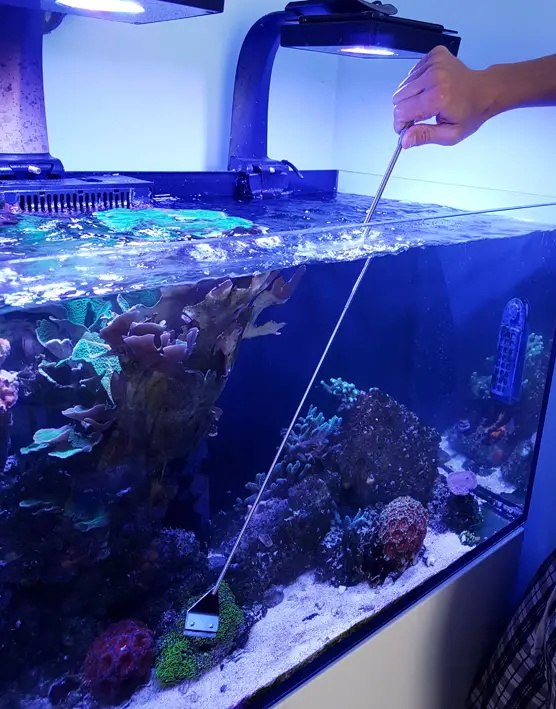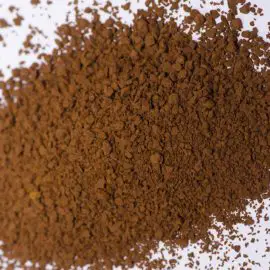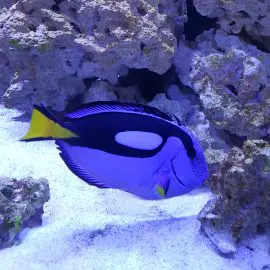The Best Way to Remove Coralline Algae
One of the most common questions we’ve seen by far is from saltwater aquarium owners asking how to remove coralline algae from glass. What is the point of having a colourfully inhabited aquarium, if you can’t see any of it?
Coralline algae is an encrusting purple coloured algae that will cover your rocks, your powerheads and anything else in your tank given the chance. It is desired by many reef keepers for it’s natural look, and is often left to grow on the rear pane of the aquarium.
Just starting out in the saltwater hobby? Get your copy of How To Set Up A Successful Saltwater Aquarium ebook today.
This ebook will help to guide you past the mistakes I have made over the years.
How to Remove Coralline Algae from Glass
It can however be a tough customer to remove and for this reason you need the right tools for the job. You may have heard of an algae mower vac but I can assure you that this will not remove coralline algae from a saltwater aquarium.
When coralline algae starts growing on the glass, it becomes a little more difficult to shift. The most effective method is using a blade tool such as:
Algae scraper with an extendable handle
This makes it easy to reach those parts that would be made more difficult otherwise.
For more info on the Tunze and FL!PPER follow this link.
Be sure to rinse the blade off after every use to prolong its life and prevent the potential for rust appearing.
How to Remove Coralline Algae from Plastic
Coralline can grow on powerheads, heaters, skimmers or any equipment within the tank. These items which can be removed from the tank. They can be soaked for a few hours in a solution of 50/50 water and distilled white vinegar in which coralline algae is easily dissolved.
I use a bucket which is specifically set aside for using with items from my marine aquarium. This way I know that no household chemicals are present which could potentially be hazardous to marine life.
Once they have been left to soak for a few hours all you need to do then is brush it away with a toothbrush or any other stiff brush.
Depending on the thickness of the coralline algae, you may need to repeat the process a few times. Or leave them soaking overnight to give the solution time to fully dissolve the coralline algae.
Remember to always rinse the equipment off with clean RODI water before returning it to the tank. Although white vinegar is non-toxic, it is used in carbon dosing and can affect your nutrient levels.
How to Remove Dried Coralline Algae
Dried coralline algae can be removed in much the same way as removable plastic items from the aquarium, with white vinegar solution.
The most common reason to clean off dried coralline algae is when changing or upgrading tanks. There are generally two ways in which you could go about doing this.
-
Lay the tank on it’s side and soak a dedicated face cloth with pure white vinegar. Leave the face cloth on top of the algae for approximately 30 minutes to an hour and then brush it away with your toothbrush or soft scourer. Again, if the coralline algae is very thick you may need to leave the face cloth on for longer intervals.
-
If the tank will be staying in an upright position and use a spray bottle filled with pure white vinegar, spray the insides of the tank. Also use the face cloth by pegging it in position. Make sure to keep respraying when areas dry up and as above and leave for approximately 30 minutes to an hour. You can then use a soft scourer or toothbrush to clean the coralline algae away.






